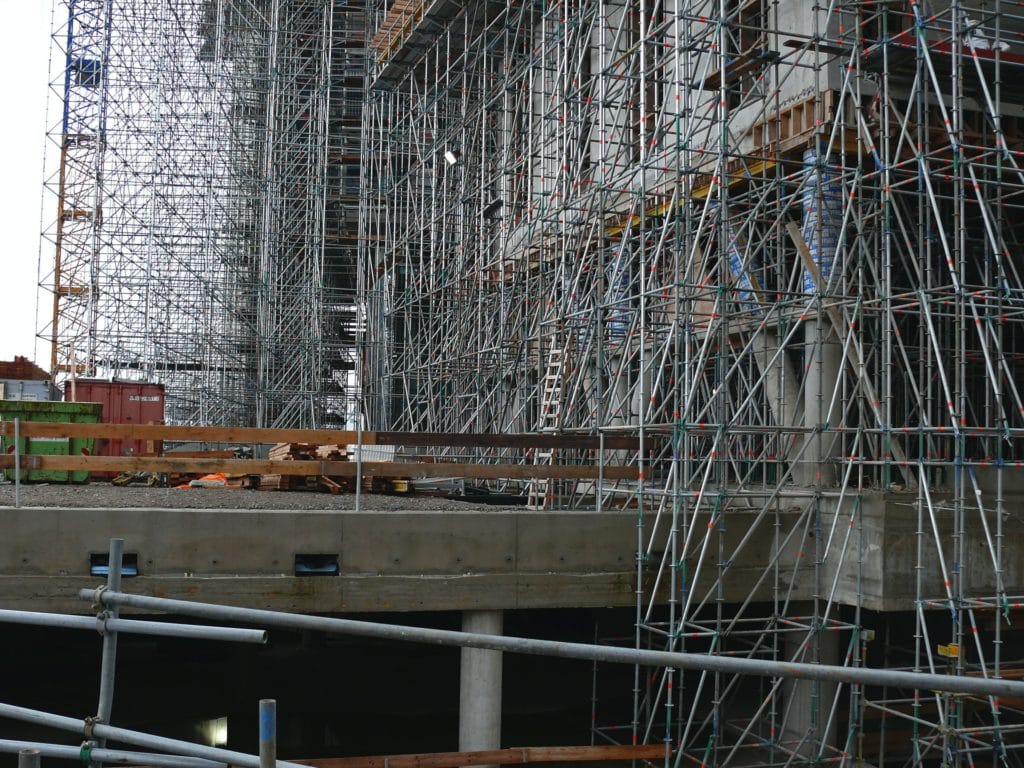
While scaffolding is a crucial piece needed for countless construction projects, it may be daunting to get your project off the ground if you’re unsure how to use the equipment you need safely. After all, 33.5% of all construction-related fatalities are tied to fall hazards.
OSHA standards detail exactly how, where, and why scaffolding should be used, and we highly encourage you look into all specific regulations pertaining to your project here.
Here are some simple tips below to help keep you and your crew safe while taking on your next major project.
Slow Down
Getting the project done is important, because your pay may ultimately be at risk if you fall behind schedule. If you overlook safety on the job site, though, you may be making careless and costly mistakes.
Instead of rushing through a job, spend the time to focus on being efficient. You don’t need to sacrifice safety for a job well done. Play it safe and take your time with any project you’re doing high off the ground.
Another place you may rush is by using multiple brands and styles of scaffolding to make a project move along quicker. If you mix and match these styles, you can create an unstable and dangerous platform. Even if the holes and studs seem to fit together, always ensure equipment matches up 100% before putting your employees on it.
Train, Train, and Train Again
Your team has likely gone through countless training exercises and is quite sick of reminders, but constant training is an absolute must when it comes to scaffolding safety.
When you’re setting up scaffolding, you should be training employees. When you’re working on scaffolding, you should be training employees. When this training takes place, you make workplace accidents nothing more than a bad dream.
This training, of course, cannot be done by just any manager on your team. Make sure whoever is in charge of training is qualified in recognizing hazards like electrocution risks, falls, and falling objects.
Though it may seem obvious, make sure all training includes proper use of scaffolding and load capacities of the scaffolding. These potentially overlooked risks could easily cause a serious accident for you, your crew, and your clients.
Think About The Above and Below
Always, and we mean always, wear hardhats when you’re around scaffolding. You never know what could fall from a platform while a crewmember is hard at work above you.
When you’re up on the scaffolding, consider the people below you. Never leave construction materials on the scaffolding overnight as it could blow off in heavy winds and cause tripping hazards. Worse, it could fall onto somebody below.
You should always use a 2×10 piece of wooden block under the legs of the scaffolding to make a stable environment. While not strictly required on concrete, it can help even out some of the unevenness that comes with concrete ground.
If the ground is extremely uneven, use an adjustable base jack to make sure the scaffolding is as even as possible. Never just use stacks of wood, as this isn’t stable and could cause scaffolding to collapse.
Be As Cautious As Possible
If you think something is wrong, it most likely is. If you think that your scaffolding has been damaged in any way, don’t use it. If somethings missing, like protective canopies or debris nets, let somebody know as soon as possible to get the scaffolding back in proper working order and inspected by a competent member of your team.
Consider where your project is going to be located. If you’re working around power lines, you should consider moving your scaffolding away as far as possible to prevent risk of electrocution. If you know your scaffolding will have to be moved throughout the project, make a game plan ahead of time to mitigate any potential risk factors.
This includes conditions caused by weather. If scaffolding is covered in mud, snow or ice it can be extremely slippery and pose serious health risk to your employees.
Being comfortable with a work site comes with its own risks. As your team becomes more comfortable, they may begin to accidentally or even blatantly neglecting safety in favor of convenience. Ensure that safety inspections are happening consistently and nothing is out of place before allowing workers to use scaffolding.
Use The Guardrail and Ladder
While OSHA may not require the use of a guardrail on every project, it may be in your best interest as an employer to install one. You can prevent many types of workplace accidents, such as employees stepping off the edge of the platform, by simply installing guardrails onto your scaffolding.
Always ensure your employees are using a ladder rather than simply climbing any piece of the scaffolding frame they wish to climb. This can assist in preventing injuries substantially. Despite it seeming helpful, it’s usually ill advised for your employees to use safety harnesses when climbing scaffolding due to fall risk. If an employee falls, it’s very possible that the sudden movement could topple scaffolding over.
Ready To Rent?
You probably agree that safety is not a luxury, it’s a requirement for every worksite. You’ll never go wrong with an extra scaffold, or a state-of-the-art power generator. At Elephant Construction Solutions, we offer you and your team all of the equipment you need to get the job done. We have everything you need–including scaffolding, power tools, air compressors, power generators, lawn mowers and nail guns–to get your project done quickly and safely.
Reach out to us here to get a free quote for all of your equipment needs.
Elephant Construction Solutions is a latino-family-owned business based in Pharr, TX. We combine many years of experience in different fields to finally offer you, our customer, a real solution of tools and equipment so you can be more productive.
